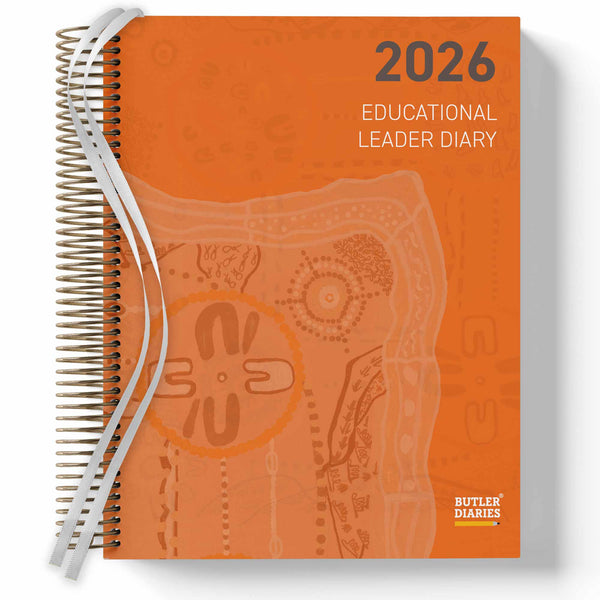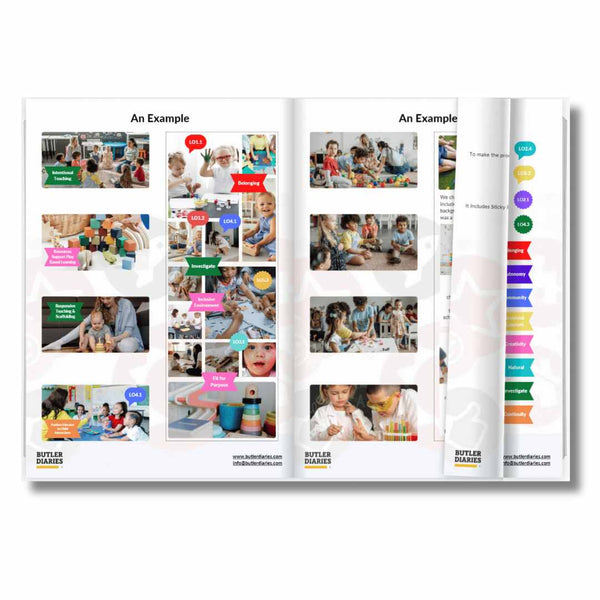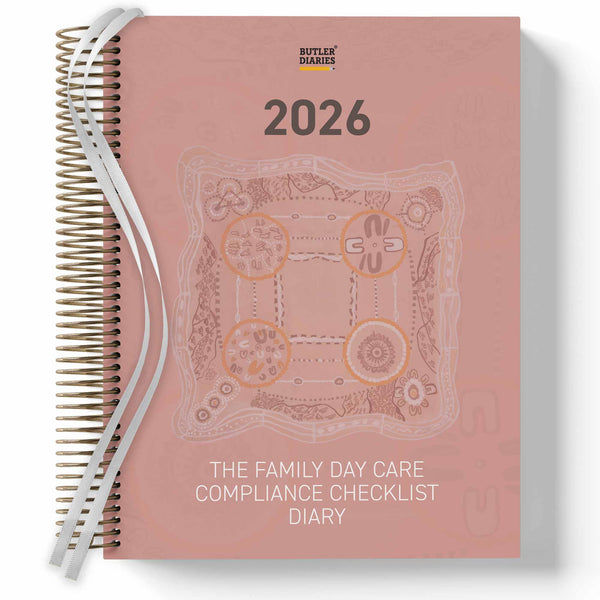Here we have another article from our EYLF and MTOP V2.0 Series that explains the MTOP and EYLF V2.0 Planning Cycle.
First an overview, in 2023 EYLF and MTOP V2.0 were released as Approved Frameworks. For the remainder of the year, they are running alongside the existing 2012 Frameworks. In early 2024, the 2012 Early Years Learning Framework and My Time, Our Place Framework will no longer be considered Approved Learning Frameworks and will be completely replaced by EYLF and MTOP V2.0.
In our first MTOP and EYLF V2.0 article, we unpacked the changes in EYLF and MTOP V2.0 to help you plan for your transition in the lead up to 2024. In this article, we focus on the MTOP and EYLF Planning Cycle including the clarifications made in V2.0.
In this article
- How it impacts you
- What is means for Educational Leaders and Educators
- Supporting you in showing the Planning Cycle
- MTOP and EYLF Planning Cycle explained
- What is the Planning Cycle?
- Why is the Planning Cycle Important?
- EYLF and MTOP V2.0
- National Quality Standards
- What does the Planning Cycle look like?
- The process of the Planning Cycle explained
- Observe
- Assess
- Plan
- Implement
- Evaluate
- Then what?
- Using the Weekly Programming and Reflection Diary to show the Planning Cycle
- MTOP and EYLF Planning Cycle Example 1: Informing Decision Making
- MTOP and EYLF Planning Cycle Example 2: Assessments of Learning
- Documenting observations (Observe)
- Interpreting learning (Assess)
- Getting it on paper (Plan)
- Putting it into action (Implement)
- Getting critical (Evaluate)
- Informing ongoing practice (Planning Cycle)
- Tips for showing the Planning Cycle
How it impacts you
From 2024, the existing Frameworks will no longer be Approved Frameworks under the National Quality Standards. In addition, changes to Assessment and Rating this year means there are shorter notice periods of upcoming A&R so you have to be 'assessment ready' at all times. Learn more about the changes here.
What that means for Educational Leaders and Educators
Educational Leaders: It is your responsibility as Educational Leader to ensure all Educators are transitioning to EYLF and MTOP V2.0 and these reflective practices are embedded in service operations. The focus on clarifying the Planning Cycle will bring additional expectations from Assessors who want to see the ongoing process of programming and practice. As Educational Leader, it is your responsibility to support Educators in applying and documenting the Planning Cycle.
Educators: As an Educator, understanding and being able to demonstrate the Planning Cycle in your programming and documentation is essential for exceeding the National Quality Standard. You are expected to be able to explain and show evidence of the Planning Cycle in action and will need to have the documentation readily accessible.
It is vital families play a role in this transition. It is the responsibility of both the Educational Leader and Educators to share the changes with families and communicate the benefits of using EYLF and MTOP V2.0 for children's learning and wellbeing. We have created EYLF V2.0 posters to make communicating these changes with families even easier.
Supporting you in showing the Planning Cycle
Our Weekly Programming and Reflection Diaries have already been designed to make the Planning Cycle visible. We have collected feedback from Educators and Assessors and here is what they had to say:
- "The department love it"
- "We can see the flow, we can see the programming cycle"
- "It's just really straight forward for everybody. For the department, for parents, for the educators.... for everybody."
Read more in our article, Rated Exceeding "The Department Love It": A Case Study.

While explaining the MTOP and EYLF Planning Cycle V2.0, we will also provide examples of how to make the cycle clear in your Weekly Programming and Reflection Diaries.
MTOP and EYLF Planning Cycle Explained
What is the Planning Cycle?
The Planning Cycle is the ongoing process of planning and documenting children's learning. It guides educators in responding to and supporting children's learning.
With the Frameworks, professional knowledge, your understanding of children, and the community context, you use the Planning Cycle to inform and make decisions regarding your program and practice.
The Planning Cycle leads to an intentional program that is providing the best outcomes for children.
Why is the Planning Cycle Important?
To put it simply, the Planning Cycle promotes continuous improvement and better outcomes for children. It is linked to best practice in Approved Learning Frameworks and the National Quality Standard.
EYLF and MTOP V2.0
"The Framework supports curriculum decision-making as a continuous cycle of planning, assessment and critical reflection. This involves educators knowing the children, families and community contexts and drawing on their professional knowledge to plan for individual children and groups. These plans are implemented, evaluated and reflected upon to inform further planning." - Early Years Learning Framework V2.0, 2022, pg. 7
This means you are required to guide your programming and practice by the Planning Cycle to effectively apply Approved Learning Frameworks. In addition:
"It is important to note that documentation occurs at every stage of the planning cycle." - The Planning Cycle, EYLF V2.0, 2022, pg. 27
Not only does the Planning Cycle need to guide your programming and practice, it also needs to be visible through documentation.
National Quality Standards
"Each child’s learning and development is assessed or evaluated as part of an ongoing cycle of observation, analysing learning, documentation, planning, implementation and reflection." - ACECQA, National Quality Standards, QA1, S1.3, E1.3.1.
Quality Area 1: Educational Program and Practice requires educators to implement a program that based on an assessment and planning cycle. The goal of the Planning Cycle is to drive continuous improvement through an ongoing process that involves the service, families, and community. The principle of ongoing quality improvement is represented in all three exceeding themes.
"Practice is embedded in service operations when it occurs consistently, frequently and intentionally as part of an ongoing process that is understood and implemented by all educators across all aspects of the program." - ACECQA, Embedded in service operations (Theme 1), About Exceeding.
"Critical reflection involves a deep level of regular and ongoing analysis, questioning and thinking that goes beyond evaluation and review. Critical reflection informs practice when the continuous reflection of all educators, individually and together, influences decision-making and drives continuous quality improvement." - ACECQA, Informed by critical reflection (Theme 2), About Exceeding.
"Practice is shaped by meaningful engagement with families and/or the community when educators actively seek input, guidance and feedback from children, families and the community. Meaningful engagement with families and/or the community helps to shift thinking, shape ongoing practice and foster a culture of inclusiveness and sense of belonging for all." - ACECQA, Shaped by meaningful engagement with families and/or the community (Theme 3), About Exceeding.
What does the Planning Cycle look like?
EYLF and MTOP V2.0 include a diagram to explain the process of the Planning Cycle. This 5 processes are used to inform decision-making throughout your practice, whether that is at a particular moment, over the day, or over a period of time. The Planning Cycle should be visible in small, everyday decisions and interactions and over your weekly, monthly, and even yearly programming. The only way your Planning Cycle can be visible is through consistent documentation and record-keeping.
The Planning Cycle involves the following process:
- Observing,
- Assessing,
- Planning,
- Implementing, and
- Evaluating.
The Planning Cycle is a circle to represent the ongoing process of the above components.

The Planning Cycle, EYLF V2.0, 2022, pg. 27
The process of the Planning Cycle Explained
The Planning Cycle should be approached through the integrated connection between the Vision, Principles, Practices, and Learning Outcomes of the MTOP and EYLF Framework with Belonging, Being, and Becoming overlapping all these elements.

Elements of the EYLF Learning Framework, EYLF V2.0, 2022, pg. 10
Observe
In this process of the Planning Cycle, educators are focused on gathering data. This can be during planned or spontaneous experiences, routines or transitions, and throughout interactions. It is important to form a holistic view of the child and this involves collecting observations across different points of children's days. A holistic view of the child is captured when educators focus on children's social, emotional, physical, personal, and spiritual wellbeing. In other words, they recognise the interconnectedness of all areas of children's learning, development and wellbeing. Children's and families' voices are an integral part of taking a holistic approach and they should be encouraged, heard and recorded.
Your observations can involve listening, engaging with or silently watching children as they are involved in their own learning and the learning of others. Observations should be taken in consideration of approved learning frameworks and include describing children's belonging, being, and becoming.
While observing, this information needs to be collected and recorded.
Assess
Once you have observed aspects of children's learning, you need to assess this information to interpret what learning is happening. What is observed to be two similar situations can have vastly different learning opportunities for different children.
In order to successfully analyse children's learning, educators should rely on their own professional knowledge, experts and theories in Early Childhood, collaboration with other professionals, Approved Learning Frameworks, and other assessment criteria such as Developmental Milestones. Your knowledge and understanding of the child, their family, and community context should also be considered in your assessment. It is vital to consider the diverse context for that child rather than relying on a universal interpretation.
Your assessment of your observation should be documented to inform the next step in the process and can include:
- Assessment in your initial observation,
- A record in your Weekly Programming and Reflection Diary, and/or
- In a day story.
Plan
Your assessment will be used to inform and inspire you to plan for an enriching experience that will extend the child's learning and thinking. It is important to demonstrate how your experience is designed intentionally to have appropriate learning and teaching strategies and enriching resources. Your plan should consider the context, indoor and outdoor learning environments, as well as the content.
To show your rationale, use relational and place-based pedagogies to plan a meaningful experience.
Collaborating with children, families, and the community can strengthen the planning process. Learning experiences can be either individual or group experiences and which you choose should be a part of your learning and teaching strategy.
Record your plan on the day and time you plan to implement the experience in your Weekly Programming and Reflection Diary's programming spread.
Here are some Intentional Teaching Strategies with tips for reflecting on them.
Implement
On the day you planned the experience, it is time to implement it. As you are implementing your planned experience, you review the learning that is occurring and adapt and extend children's learning as appropriate.
Learning can be extended through adult or child-led experiences, routines, across the indoor and outdoor environments, and during transitions. Your teaching and learning strategy should be visible and children should be engaged and their thinking amplified.
Documentation at this step could look like:
- Photos,
- Videos, and/or
- Artwork
recorded in your Weekly Programming and Reflection Diary or Children's Portfolios.
 We have now introduced the Programming and Reflection Printer Pack to make photo evidence even easier. It includes V2.0 outcomes and print-ready photo templates for your reflection spread.
We have now introduced the Programming and Reflection Printer Pack to make photo evidence even easier. It includes V2.0 outcomes and print-ready photo templates for your reflection spread.
Evaluate
This is where you critically reflect on the learning and evaluate the success of your plan. Educators should consider whether the experience was meaningful and effectively extended children's learning. Again educators consider a holistic approach to children's learning with reflection on children's identities and unique capabilities.
When critically reflecting, educators should not only consider the experience they planned but possibilities for the future such as further learning opportunities or collaboration with the team and professional learning to improve practice.
When evaluating your plan, consider:
- What worked and what didn't work?
- Why was this the case?
- What changes could I make for future experiences?
- What could I do to extend children's learning?
- How can this inform future practice?
These questions can be considered in the context of the experience, environment, resources used, children's response, professional knowledge, children's engagement, teaching strategies, and more.
Record your reflections in your Weekly Programming and Reflection Diary's reflection spread or Individual Observation Book.
For more tips on critical reflection, you can check out this article 'The Importance of Critical Reflection in Early Childhood Education' and this article 'Tips for Using Our Weekly Programming and Reflection Diary.'
Then what?
The Planning Cycle repeats as it informs ongoing quality improvement. You again begin gathering data according to what you've found in your evaluation. You Assess, Plan and Implement experiences or professional inquiry to improve practice and outcomes for children.
Using the Weekly Programming and Reflection Diary to show the Planning Cycle
Note that we used the following key throughout to help make the Planning Cycle visible:
- FI - family input,
- EX - For an extension experience,
- The Date that relates to the previous experience or collaboration, and
- Anne to identify the child it relates to.
MTOP and EYLF Planning Cycle Example 1: Informed Decision Making
In the following example, we are beginning with family input into the program. Anne's mum shared she showed a strong interest in helping cook dinners. We have included the family input and child's interest into the program by setting up a Cooking Area.


We are showing the Planning Cycle in this decision making process:
- Observe: We gathered data on Anne's family experiences and recorded it in the Family Input section in the Weekly Programming and Reflection Diary's reflection spread,
- Assess: We used our knowledge and understanding of the child's interests (cooking spaghetti) and the benefits of children transferring what they know from one context to another (ALFs) to assess this family input, and then,
- Plan: To add a Cooking Role Play area into the room that includes what Anne needs to explore her interest. We recorded this in the Weekly Programming and Reflection Diary under 'Extension Planning' and 'Next Suggested Ideas' to explore. The plan was also recorded on the day in our programming spread.
- Implement: We set up the environment on Monday as per our plan in the Weekly Programming and Reflection Diary's programming spread. Evidence of this will be visible in our Day Story and pictures can also be included in our Reflection Spread.
- Evaluate: We evaluated in our Observation which started the cycle again, recorded in the Individual Observation Book. See the below example for our how we continued the cycle with Assessments of Learning.
MTOP and EYLF Planning Cycle Example 2: Assessments of Learning
Documenting observations (Observe)
The Cooking Area was a success and Anne's learning was visible. Anne's Individual Observation was recorded in the Individual Observation Book and was referenced in the Weekly Programming and Reflection Diary's 'Observations Taken This Week' record.

Interpreting learning (Assess)
In our Observation, we recorded the key assessments of Anne's learning and linked it to learning outcomes. We used our assessment to plan for further learning.
Getting it on paper (Plan)
We used our assessment to plan an extension experience to build on the learning data we gathered and recorded it to take place on the 3rd in our Weekly Programming and Reflection Diary's programming spread.

You'll see in our Reflection Spread our plan was intentionally created and we recorded our strategies for both the cooking environment and cooking experience under 'Changes to the Environment' and 'Intentional Teaching/Learning Experiences Covered.'

Putting it into action (Implement)
The experience was implemented and we chose to include a photo as a record in our Weekly Programming and Reflection Diary's reflection spread under 'Photographic Evidence of Learning Experiences'.
Getting critical (Evaluate)
Again, we chose to evaluate our plan in our Weekly Programming and Reflection Diary's reflection spread where we considered the success of the experience, what could have worked better and where to next, all recorded under the image in 'Photographic Evidence of Learning Experiences' and 'Routines & Transition Comments.'
Informing ongoing practice (Planning Cycle)
This is now informing our practice in the future as we plan to include weekly cooking experiences and create a Recipe Book that will encourage families to also be included. You would continue to document this in your Weekly Programming and Reflection Diary, Children's Portfolios, and Individual Observation Book.
Tips for showing the Planning Cycle
You will notice throughout both examples, we continued to reference previous experiences and noted where records outside the Weekly Programming and Reflection Diary were kept. This means an assessor will easily be able to find the initial family input that lead to extensions for Anne and then overall changes for the group as a whole with regular cooking and a recipe project. The Planning Cycle is visible and every step is shown in your documentation.
This is also a fantastic way for you to track learning outcomes for children and continue to improve practice. You do not need to use this exact key and can create your own. The simpler, the better, so families, assessors, and staff can follow the Planning Cycle.
For more examples of the Weekly Programming and Reflection Diary in practice, download our eBook. Haven't got yours yet? We have huge sales, up to 70% off!
Resources
https://www.acecqa.gov.au/sites/default/files/2023-01/EYLF-2022-V2.0.pdf
https://www.acecqa.gov.au/assessment/exceeding-nqs
https://www.acecqa.gov.au/nqf/national-quality-standard
































